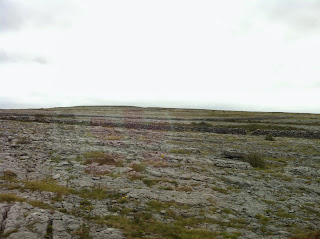Probably one of the most famously scene natural sights in Ireland are the Cliffs of Moher. Rather than trying to drive the hours of country roads on my own, I opted for another bus tour. Why not let someone else drive me around and tell me stories all day?
Watching the waves from the Atlantic Ocean beat at the huge sea cliffs, even the ocean seems small and helpless against the dark, cold stone that stands above, unyielding and uncaring about the tickle if waves beneath.


As we made out way up into the mountains, the landscape changed from green and lush to rocky and harsh. This area of Ireland had a kind of lunar landscape which was very barren, covered in rolling hills of rock, and was bereft of trees and much greenery. People lived here though, in houses made of stone. At one point a few hundred years ago taxation was determined based on the number of windows you had in your home. So what did the people do? They rocked-up their windows and put in split doors, so that the top of the door could be opened as a window, and when the tax collector came along, it was merely a door.
It was a liiiiittle windy!


We passed through the Valley of the Killer Sheep, where many a traveler had been victims of brutal attacks by these grizzly and ferocious animals. Well, mostly they just wandered slowly across the road and chewed a mouth full of grass while glaring at you...but you should never turn your back on them! Mountain Sheep are kept for the lambs, which is a sought after meat in Ireland. Their wool actually isn't good for much given the harsh conditions they live in. But let me tell you, lamb is tasty! As for all you readers who are about to get uppity on me, take 10 minutes to research where the chicken and beef you eat come from (for real) and then we can have a conversation. :)


















No comments:
Post a Comment